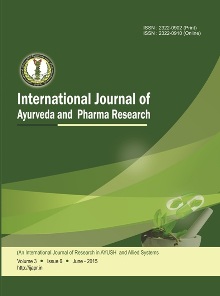Role of Rakthadushti in the Pathogenesis of Vicharchika: A Review of Classical and Keraleeya Ayurveda Perspectives
Abstract
Vicharchika, classified as a Kshudra kushta, is a common dermatological disorder with predominant Kapha dosha involvement. However, Raktadushti plays a crucial role in its pathogenesis, as evidenced by various descriptions in Ayurvedic classics. Ayurvedic texts, including Bruhat Trayis and Keraleeya Ayurveda Granthas, highlight the interconnection between Kushta, Vatarakta, and Rakthavatha, emphasizing the role of vitiated Rakta in disease manifestation. Symptoms such as Pidaka, Srava, Kandu, Daha, and Syavata indicate varying degrees of Rakthadushti, correlating with the Uthana avastha of Vatharakta. The presence of Paka of Raktha further supports the similarity between Vicharchika and Rakthavatha. The treatment axis in Ayurveda revolves around Hethu (causative factors), Linga (clinical features), and Oushadha (medications), making the analysis of Rakthadushti essential for precise intervention. Therapeutic approaches such as Rakthamokshana, Sodhana (purification), and Samana (palliative measures) play a key role in disease management. Keraleeya Ayurveda texts, including Chikitsa Manjari and Arogyaraksha kalpadruma, provide additional insights into the pathology and treatment of Vicharchika through the concept of Rakthavatha and Rakthasthambha. A comprehensive understanding of Rakthadushti enables effective treatment planning, ensuring holistic management and better clinical outcomes in Vicharchika.

Copyright (c) 2025 International Journal of Ayurveda and Pharma Research

This work is licensed under a Creative Commons Attribution-NonCommercial-ShareAlike 4.0 International License.


